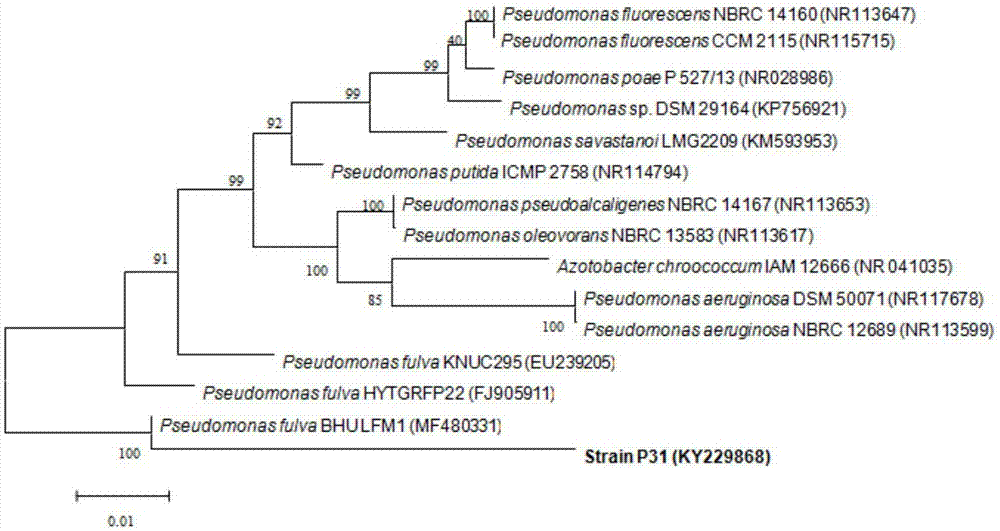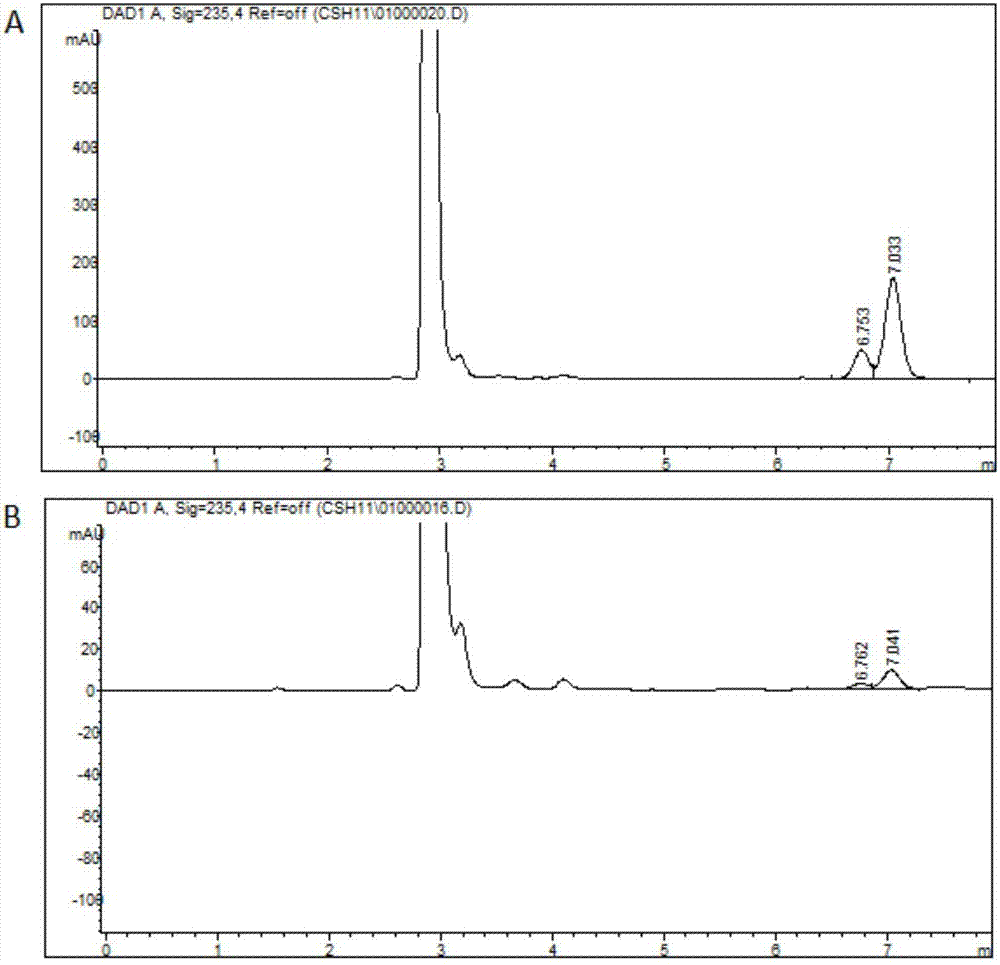Insecticide d-phenothrin degradation strain, as well as microbial agent and degradation process thereof
A technology of d-phenothrin and degrading bacteria, applied in the direction of bacteria, chemical instruments and methods, biochemical equipment and methods, etc., can solve the problems of excessive d-phenothrin residues, environmental pollution, etc., and achieve the goal of solving the problem of pesticides The problem of excessive residues and environmental pollution, the effect of good degradation effect
- Summary
- Abstract
- Description
- Claims
- Application Information
AI Technical Summary
Problems solved by technology
Method used
Image
Examples
Embodiment 1
[0055] Isolation and Identification of Example 1 Bacterial Strain P31
[0056] 1. Isolation and screening of strains
[0057] (1) Sample: Collected from the activated sludge at the sewage discharge outlet and surrounding areas of a chemical plant in Guangxi.
[0058] (2) The separation and screening method adopts the enrichment culture method, as follows:
[0059] Add 100 mL of basic mineral salt medium (MSM) into a 250 mL Erlenmeyer flask and sterilize (121° C. for 20 min). After cooling the culture medium, add d-phenothrin sample mother solution (acetone as solvent) under aseptic conditions, so that the final mass concentration of d-phenothrin is 100mg / L. After 7 days of culture on a shaker at 200r / min, transfer to the second batch of MSM medium containing 200mg / L d-phenothrin according to the inoculum size of 10%. After culturing under the same conditions for 7 days, transfer them to the basal medium containing 400 mg / L d-phenothrin according to 10% inoculum size, and co...
Embodiment 2
[0077] The preparation of embodiment 2 bacterial strain P31 degrading bacteria agent
[0078] 1. The production process of using the above-mentioned bacterial strain P31 to prepare the degrading bacterial agent is as follows:
[0079] Inclined species - shake flask seed solution - seed tank culture - production tank fermentation - product (packaging dosage form is liquid dosage form or solid microbial dosage form).
[0080] 2. Specifically, the method for preparing the degrading bacterial agent is as follows:
[0081] (1) Activate the bacterial classification of bacterial strain P31 on the LB solid plate, inoculate it on the inclined surface of the LB test tube for subsequent use;
[0082] (2) Inoculate the test tube species of bacterial strain P31 in a 1000mL shake flask containing 250mL LB medium (medium formulation: 0.5% yeast extract, 1% peptone, 1% NaCl, pH value 7.2~7.5), 30°C Oscillate at constant temperature to the logarithmic phase to obtain strains;
[0083] (3) T...
Embodiment 3
[0086] The optimal degradation process condition screening optimization of embodiment 3 bacterial strain P31 inoculum
[0087] 1. Using the combination of single factor experiment and response surface method, the characteristics of strain P31 degrading d-phenothrin were determined, and the degradation conditions of the strain were optimized at the same time.
[0088] The P31 bacterial agent was subjected to a single-factor degradation test, and the degradation rate of the P31 bacterial agent was determined by sequentially changing the factors that affect growth and degradation, such as temperature, pH value, inoculum size, oscillation rate, liquid volume, etc., to determine the impact on the P31 bacterial agent. key factor in degradation rate. Use SAS 9.0 statistical software to carry out experimental design (Table 3) according to the Response Surface Method Box-Behnken design principle, to affect the key factor temperature value (X 1 ), pH(X 2 ) and inoculation volume (X 3...
PUM
 Login to View More
Login to View More Abstract
Description
Claims
Application Information
 Login to View More
Login to View More - R&D
- Intellectual Property
- Life Sciences
- Materials
- Tech Scout
- Unparalleled Data Quality
- Higher Quality Content
- 60% Fewer Hallucinations
Browse by: Latest US Patents, China's latest patents, Technical Efficacy Thesaurus, Application Domain, Technology Topic, Popular Technical Reports.
© 2025 PatSnap. All rights reserved.Legal|Privacy policy|Modern Slavery Act Transparency Statement|Sitemap|About US| Contact US: help@patsnap.com



